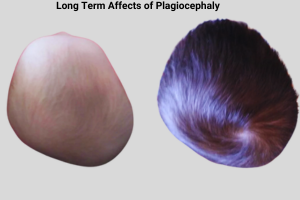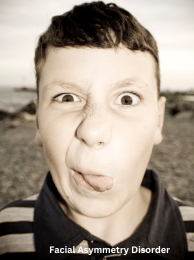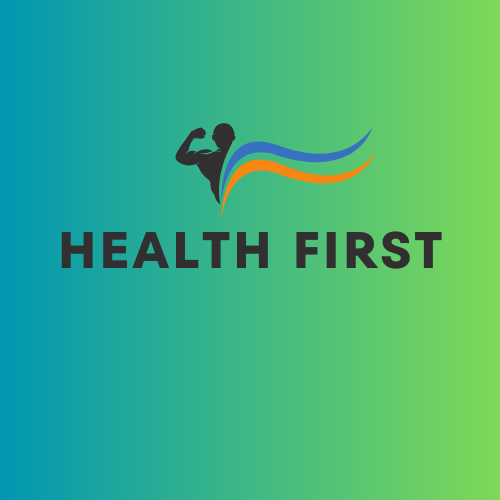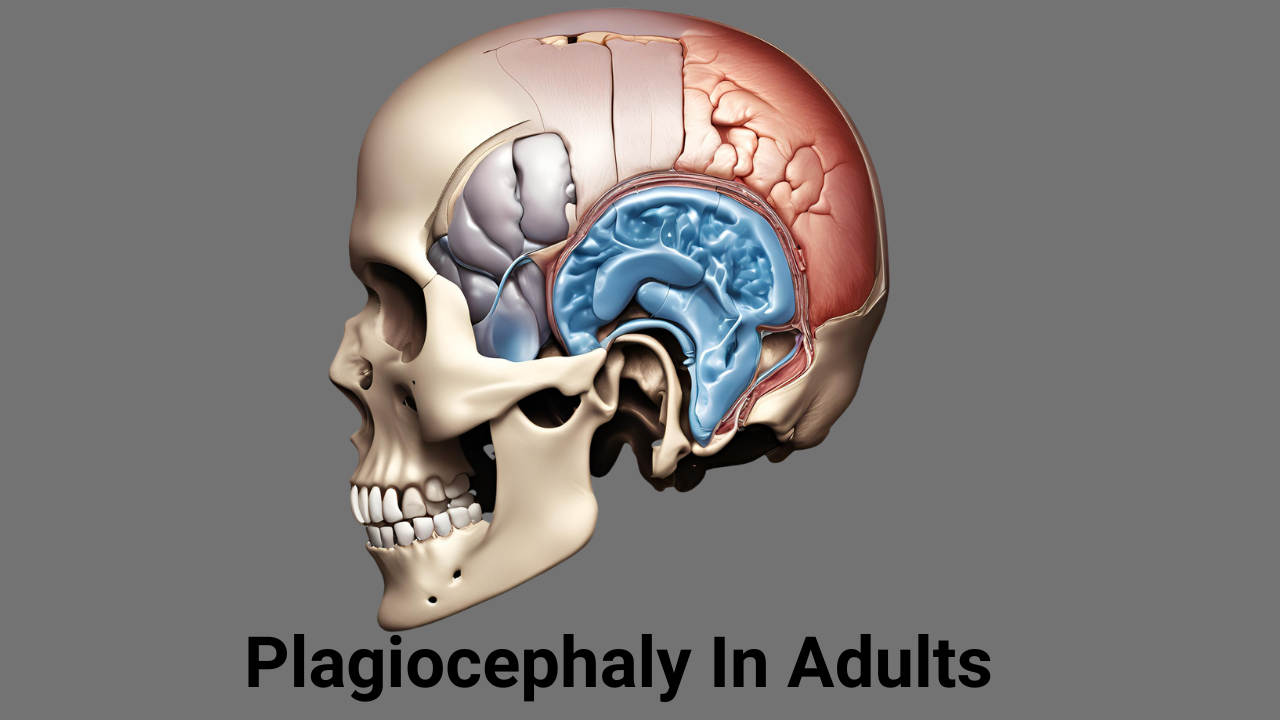Introduction
People frequently think of newborns and infants when they hear the term plagiocephaly. In pediatric healthcare, this condition—also referred to as flat head syndrome However, did you realize that adults can also be affected by plagiocephaly?
Plagiocephaly in adults may result in persistent pain, postural problems, and in certain situations, neurological abnormalities, in addition to cosmetic concerns. Adult plagiocephaly may be the cause of your prolonged neck strain, frequent migraines, or asymmetrical head shape.
We’ll cover much more detail on plagiocephaly in adults in this post, including its causes, signs, possible side effects, and available treatments. By the end, you’ll know exactly how to prevent or manage this disease and whether you need to seek medical attention.
Table of Contents
What Is Plagiocephaly in Adults?
Understanding Plagiocephaly
Plagiocephaly is a disorder that causes a significant asymmetry by flattening or deforming one side of the skull. While continuous pressure on one area of the head usually causes it to develop in infants, trauma, poor posture, or underlying medical issues can also cause this syndrome in adults.
Depending on the etiology, length of time, and overall effect on the person, plagiocephaly in adult may vary from minor to severe. While some people may experience chronic discomfort and functional difficulties, others may live with mild skull asymmetry without any serious health problems.

Positions for Posture and Sleeping
- By applying pressure to a specific region of the skull, consistently sleeping on one side all the time might cause the skull to gradually flatten.
- Skull asymmetry can also occur in those who sit at computers for extended periods of time with poor posture due to continuous pressure on one side of the head.
- Reclining for extended periods, especially in hospital settings or sedentary lifestyles, can also lead to skull deformities over time.

1. Plagiocephaly in Adults Can Be Caused by Lifestyle Habits
One of the most surprising facts of plagiocephaly in adults is that it can develop due to lifestyle choices and everyday routines
Technology Usage & Forward Head Posture
- Overuse of computers, tablets, and smartphones causes forward head position, which changes the alignment of the neck and skull.
- Poor ergonomics at work can result in muscular imbalances that over time may contribute to head shape changes over time.
2. Head Trauma and Injuries Are Leading Causes of Plagiocephaly in Adults
Adult plagiocephaly can occur from head trauma, accidents, or even birth-related skull deformities that were never fixed.
Common Causes of Trauma-Induced Plagiocephaly
- Car accidents: Head injuries can change the shape of the skull.
- Sports injuries: Over time, frequent impact from contact sports like football, boxing, and wrestling can cause athletes to develop skull asymmetry.
- Falls: People who fall frequently or who are older may develop flat spot on their skulls.
These injuries can result in long-term skull deformities that cause discomfort, asymmetry, and misalignment if left untreated.
3. Plagiocephaly in Adults Can Lead to Chronic Pain and Discomfort
Some people may develop physical repercussions while others simply have cosmetic issues.
Common Symptoms of Adult Plagiocephaly
1. Headaches and Migraines: Asymmetry of the skull can cause strain on muscles and nerves, which can result in frequent headaches.
2. Neck and Shoulder Pain: Muscle imbalances caused on by an uneven skull shape can result in chronic neck and shoulder pain.
3. Jaw Problems (TMJ Disorders): Asymmetry in the skull may lead the jaw to misalign, which can cause pain when speaking or chewing.
4. Vertigo & Balance Issues: Dizziness or instability may result from an inner ear injury caused by a misaligned skull.
5. Pressure on the Brain & Neurological Problems: In severe situations, abnormalities of the skull may lead to nerve compression, which can cause problems with brain function.
Ignoring plagiocephaly in adults may lead to progressive pain, posture-related complications, and reduced quality of life.
4. There Are Effective Treatment Options for Adult Plagiocephaly
A common question among adults is: “Is it too late to treat plagiocephaly? “The good news is that there are options for treatment, even as an adult.
Non-Surgical Treatments for Plagiocephaly in Adults
Chiropractic and Physical Therapy Services
- It helps realign muscles and joints, which improves posture and reduces pain.
- Muscle imbalances brought on by skull asymmetry can be corrected with stretching and strengthening exercises.
Custom Helmets & Cranial Orthotics:
- Although these devices are usually used on infants, they may benefit adults with small skull modifications.
Postural & Ergonomic Changes
- Using a contour memory foam pillow can relieve strain on the skull when sleeping.
- Proper posture and frequent pauses can prevent worsening asymmetry.
Cranial Massage Therapy:
- Certain professionals provide cranial reshaping massages, which gently improve bone alignment and mobility.
Surgical Options for Severe Cases
Surgery may be required for adults with severe skull abnormalities. Some the procedures are as follows:
- Cranial Remodeling Surgery – Restructuring the skull to improve symmetry is known as cranioplasty
- Fat or Bone Grafting – For a more symmetrical appearance, fat or bone grafting is used to fill in flattened parts of the skull.
These operations are frequently saved for the most severe situations and need a specialist’s thorough assessment.
5. You Can Prevent & Manage Plagiocephaly in Adulthood
Many lifestyle-related causes of plagiocephaly in adults can be avoided through proper habits, however congenital cases cannot be totally prevented.
Prevention Tips
Change Sleeping Positions Regularly
- Don’t spend a lot of time sleeping on one side solely.
- Make use of a pillow that supports the alignment of the neck and skull.
Maintain Good Posture
- When working, avoid slouching and take hourly breaks.
- To prevent forward head posture, keep screens at eye level..
Exercise & Strengthen Neck Muscles
- Supporting skull alignment can be achieved by strengthening the muscles in the neck and shoulders.
- For better posture, try yoga or physical therapy..
Protect Your Head from Injuries
- When participating in sports or other high-risk activities, wear helmets..
- Be cautious about falls and accidents, especially in old age.
Conclusion
Plagiocephaly in adults is more common than most people think. Although it can be brought on by trauma, poor posture, lifestyle choices, or abnormalities of the baby’s skull, there are therapies for it.
Through early symptom management, posture correction, and medical intervention, adults with plagiocephaly can effectively control their condition and lessen discomfort.See a doctor or physical therapist for individualized treatment options if you believe plagiocephaly is interfering with your life.
FAQ
1. Can adult plagiocephaly cause headaches?
A. Yes, skull asymmetry can put pressure on nerves and muscles, leading to frequent headaches.
2. Is surgery the only option for treating adult plagiocephaly?
A.No, non-surgical options like physical therapy, posture correction, and cranial massage can also help.
3. Can plagiocephaly affect brain function?
A.Severe cases can cause neurological issues, but most cases only lead to muscle and postural imbalances.
Is plagiocephaly in adults reversible?
A. Mild cases can be managed with therapy, but severe skull deformities may require surgical correction.
5. Can helmets fix plagiocephaly in adults?
A. While helmets work best for infants, custom cranial devices may offer minor reshaping benefits for adults

